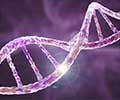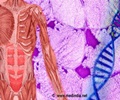A new study reports on the development of a new method that can help researchers analyze a specific segment of DNA and identify a single mutation

DNA is a type of nucleic acid, the biological molecule that gives all living things their unique genetic signatures. In a double strand of DNA, known as a double helix, a series of base pairs bond and encode our genetic information. As genomics research has progressed, it's clear that a change of just one base pair – a sequence mutation, an insertion or a deletion – is enough to trigger major biological consequences. This could explain the onset of disease, or the reason some diseases don't respond to usual antibiotic treatment.
Take, for example, tuberculosis – a disease that's known to have drug-resistant strains. Its resistance to antibiotics often is due to a small number of mutations in a specific gene. If a person with tuberculosis isn't responding to treatment, it's likely because there is a mutation, Seelig said.
Source-Eurekalert














